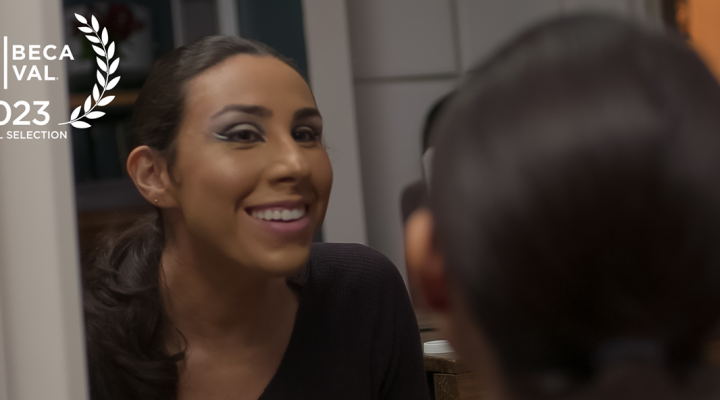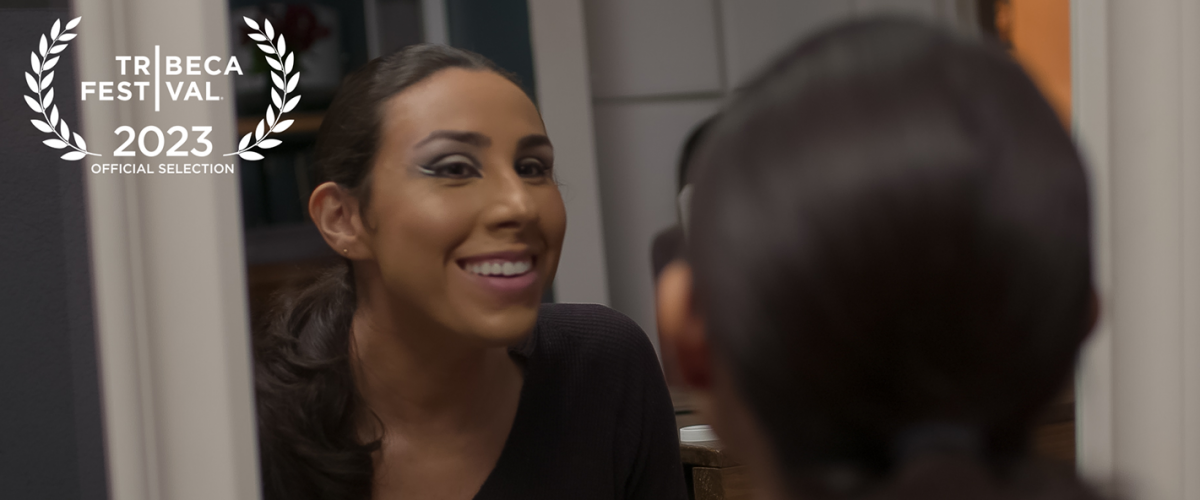Intersex people always have lived among us, but shame and societal expectations have kept them living largely in the shadows.
The June 30 nationwide release of the documentary Every Body, available in theaters and for streaming, is just the latest sign that things are changing. Intersex people are refusing to remain on the periphery; they want their stories known and their voices heard.
But churches are showing little sign that they are equipped to welcome 1.7% of the population — about as many people as those with red hair — into their congregations.
Box office numbers for the film, directed by Julie Cohen, are not an adequate gauge of the movie’s significance. Every Body is an important film because it exists. Its creation alone is an indication that society is ready for a conversation about intersex — a word few people had heard just a decade ago.
I went to the film with my intersex friend, Danny, his wife, and my husband. Just two other people were in the theater, yet the moment felt momentous. We were experiencing something that would have been unfathomable just 10 years ago when Danny was misgendered, closeted and willing himself to stay alive and neither my husband nor Danny’s now-wife nor I had ever heard the word “intersex.”
Now we were watching the story of three different intersex people — people like Danny — in public, on the same big screen where other more mainstream lifestyles are represented every day.

The cast and creators of Every Body at the Tribeca Film Festival (Photo: Focus Features)
Their stories
The four of us met at church, but in 2014 when Danny came out as intersex, our church wasn’t ready to offer the support Danny needed, and most of today’s congregations aren’t equipped, either.
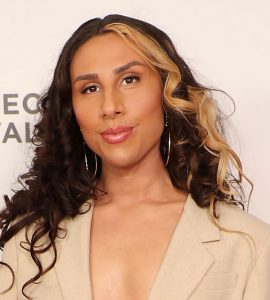
River Gallo (Photo: Focus Features)
“If you know one intersex person you know one intersex person” is a maxim I have often heard throughout the nearly nine years I’ve been researching and writing about intersex. An umbrella term, “intersex” refers to bodies that fall outside standard male/female binaries. The causes and manifestations of intersex conditions vary along a continuum ranging from outwardly invisible to the presence of both male and female genitalia.
Sean Saifa Wall, River Gallo and Alicia Roth Weigel, the three intersex people featured in Every Body, illustrate the point.
While Roth Weigel and Saifa Wall both have androgen insensitivity syndrome, a condition where a person is born with XY (male) chromosomes but is partially or fully unable to respond to testosterone, Roth Weigel was born with a vagina and internal testes and has a traditionally feminine appearance. while Saifa Wall entered the world with a small phallus, undescended testes and more masculine tendencies.
Gallo was born without testicles at all.
Their stories and gender identities differ and yet, common threads abound in their stories. One of the more obvious is that all three were told to keep silent about the ways their bodies differed from the norm. They were expected to blend in.
“All three were told to keep silent about the ways their bodies differed from the norm.”
My friend Danny’s intersex variant did not become evident until he hit puberty. By that point, no one needed to tell him to keep quiet: as the youngest child in a conservative Christian family, he instinctively knew his faith and family were at risk if anyone learned that his puberty was following a far-from-typical trajectory. It was a silence he maintained for 30 years.
Christian response
Because silence has been a common denominator connecting otherwise disparate experiences, intersex has been easy for modern congregations to ignore. Mainstream evangelical churches have found intersex simple to dismiss by virtue of it falling under the LGBTQ umbrella.
Yet, I was curious to discover what Christian response to Every Body might be. An afternoon of Googling led to just one notable hit: A review by Movieguide, a site that evaluates films “from a Christian perspective for families and works in Hollywood to redeem the media.”
The site assigned the documentary a “-4 ABHORRENT” rating based on “intentional blasphemy, evil, gross immorality and/or worldview problems.”

Sean Saifa Wall (Photo; Focus Features)
Safia Wall, who uses he/him pronouns, is described as being “born a beautiful Black girl, though she now is a cross-dressing woman” and Gallo (they/them) is referenced consistently in the masculine and referred to as a “cross-dressing man.”
In addition to misgendering the film’s subjects, the review consistently puts quotation marks around the word intersex, calling the documentary “fallacious ‘intersex’ LGBT propaganda.”
Movieguide contends Every Body focuses on a “tiny minority of people,” criticizing the film for “highly inflat(ing)” the prevalence of intersex conditions. Movieguide’s review incorrectly claims the film proports that intersex people “represent 1.8% of the population.” In actuality, the film cites the most common 1.7 % estimate.
While the scientific literature does include frequency estimates as low as 0.018, or 1 in 1,500 (the estimate Movieguide reports), the disparity is largely a reflection of differences in how the medical community classifies certain chromosomal variations.
Why the numbers matter
Downplaying the prevalence of intersex conditions is a common tactic used to delegitimatize intersex people. According to The Intersex Campaign for Equality, “the erroneous belief that we are an extremely tiny percentage of the population is often used to dismiss our need for legal rights and protections.” The organization contends that “frequency may be as high as 2% of live births” and encourages people to use the higher prevalence statistic for this reason.
“Downplaying the prevalence of intersex conditions is a common tactic used to delegitimatize intersex people.”
Theologian and intersex researcher Megan DeFranza suggests in her 2015 book Sex Differences in Christian Theology it might be helpful to view the figures as a range. While prevalence matters in terms of research funding and awareness, frequency has no bearing on the religious or moral implications around how intersex people should be perceived and treated. According to DeFranza, minimizing frequency numbers makes it easier to dismiss intersex people as “accidents,” “freaks of nature” or “anomalies.”

Alicia Roth Weigel (Photo: Focus Features)
However, even the conservative, 1 in 1,500 estimate cited by Movieguide would statistically mean intersex people are represented in our universities, megachurches and nearly every town. Even by this modest estimate, intersex people are our teachers, students, fellow worshippers and neighbors.
An attack on faith?
In addition to the dismissive and inflammatory language used in their review, Movieguide also claims that Every Body “overtly attacks Christian, biblical and Jewish ideas about human sex, biology and anatomy.” However, Rabbi David J. Meyer writes on the Religious Action Center website: “From the beginning of our Torah’s imaginings of the creation of humankind, gender diversity was part of the divine.” A simple Google search reveals a plethora of websites, nonfiction books and even novels that support Meyer’s assertion.
“It is remarkable that a sacred text which is likely more than 2,000 years old considers the circumstances of gender identity outside the assumed binary distinctions of male and female,” Meyer writes in reference to a passage from the Talmud that reads: “An androgynous, who presents both male and female physical traits, is in some ways like men and in some ways like women. In some ways, they are like both men and women, and in other ways, like neither men nor women.”
According to DeFranza, Christian tradition likewise holds space for different sexual identities in Jesus’ recognition of three types of eunuchs. “Marginal though the eunuch has always been, it at least existed in Christian culture and thought. But this is no longer true. From myth to margin, to medical erasure, intersex is believed to be a thing of legend, not persons among us,” DeFranza writes.
Because the gender binary and the complementarian value system are foundational to evangelical thought, most conservative Christians do not acknowledge or are even aware that gender is determined by five biological systems: primary and secondary sex characteristics, the endocrine system, chromosomes, and brain function — systems that all work independently from one another and are unique to an individual.
An intersex ‘exception’
Church leaders who understand the medical component of intersex may make an “exception” for intersex and offer them limited acceptance but inadvertently cause harm. My former congregation initially accepted Danny as intersex when he first came out but, as time went on and Danny began the process of presenting as male, people began to shy away. Major church donors began to leave, and support from church leadership cooled.
A church he previously worked with asked him to come to share about his intersex experience but then asked to see his medical records before they would confirm the event. When Danny declined their request, the invitation was rescinded.
“Although they acknowledged the biological basis of intersex, they also asked me to ‘identify the sin’ in an intersex condition.”
At the same time, I was offered a promotion at a small Christian university, but when I explained I had undertaken a research project on intersex and was working with Danny on a book, the administration’s main concern was to separate intersex from other LGBTQ identities. Although they acknowledged the biological basis of intersex, they also asked me to “identify the sin” in an intersex condition. What they wanted me to say was that an intersex person was morally obligated to celibacy.
Adding to the myriad pitfalls that come with fumbling attempts to make an “intersex exception” to the blanket anti-LGBTQ policies in place in the vast majority of evangelical churches is the impossibility of “proving” who is truly intersex.
Most never diagnosed
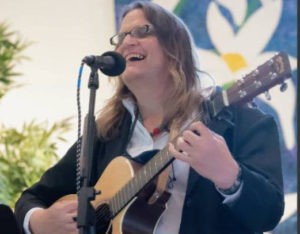
Laura Beth Buchleiter
“The reality is most intersex variations will never be diagnosed,” says Laura Beth Buchleiter, a pastor who is intersex. According to Buchleiter, when we see people we perceive to be trans but not intersex, “we don’t have the luxury of assuming that they just made a mental choice.”
And this point — that there’s an indisputable biological basis for a set of conditions that determine gender and no clear criteria by which to categorize who that includes — creates an ambiguity that becomes the fulcrum on which the conversation turns.
If it is impossible to know whether the trans person who walked through your door has intersex physiology or made a so-called “mental decision,” the conversation is forced to shift.
“This is not a moral issue, not a spiritual issue, not a matter of heaven or hell. This boils down to ‘what makes me uncomfortable,’” Buchleiter says. “But we have to ask: whose comfort?”
“I was pushed out of the closet by my body,” Buchleiter says of an experience she shares with Danny, Saifa Wall, Roth Weigel, Gallo and a statistically significant percentage of the world.
And it’s time for congregations to ease their discomfort by stretching the ridged boundaries that have kept them from accessing the solace of a spiritual home.
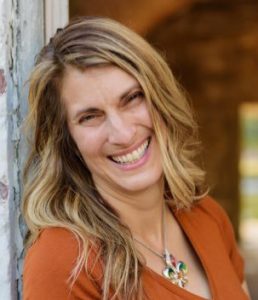
Cynthia Vacca Davis
Cynthia Vacca Davis teaches English at Virginia Wesleyan University. She also is a longtime journalist, writing about community news and faith for several outlets in the Hampton Roads area. She’s the author of Intersexion: A Story of Faith, Identity, and Authenticity from Lake Drive Books. Learn more at cynthiavaccadavis.com or on Instagram @cynthia_vacca_davis.

